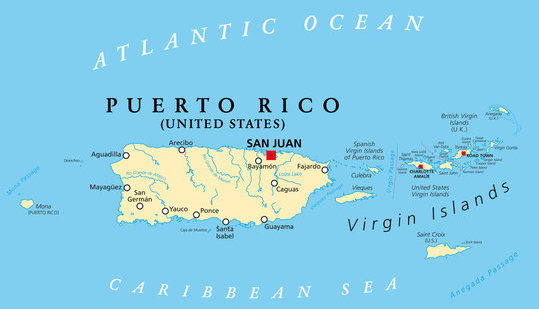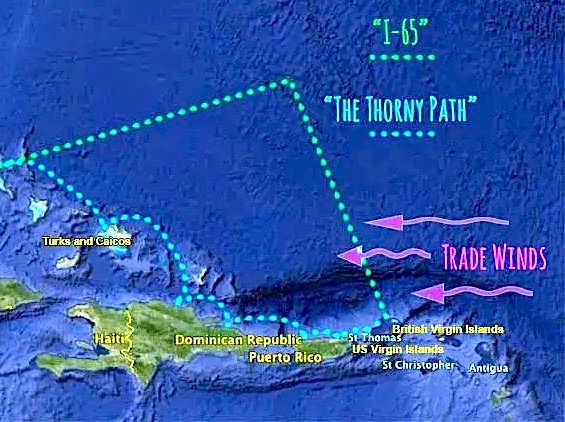Sailing to the Eastern Caribbean from The Bahamas is not an easy undertaking. For months, Kory and I have been looking into the best route to get there. After much study and inquiry, we learned about several options, and many opinions floating around too. A few of the viable options include the I-65 Route, the Thorny Path, and a modified version of the Thorny Path. We’ll take a look at all three and see why we chose the route we did.
I-65 Route
We seriously considered going the I-65 Route. This is an offshore passage that would have required us to go northeast from George Town, Exumas (our starting point) to longitude 65°W in order to avoid the trade winds. Then, we would have turned south to sail across the trade winds instead of dead upwind into them. We discovered a number of pros with this option. First, it is far more comfortable to sail on a beam reach than pounding directly into the waves, which in turn produces less stress on the boat, and lessens the chance of things breaking. Another advantage to this route is that there is nothing to hit when you’re that far offshore, so it could be a safer and more leisurely ride. And, the I-65 route would also allow us to get to The Eastern Caribbean quicker than the other options.
One of the disadvantages of the I-65 route is that we would be at sea for 7-9 days straight, and that’s a long time to be out in the open ocean. Fatigue can set in from lack of sleep and there aren’t any land masses to duck in for the night to rest. With this long passage, it is also more challenging to find a good weather window for that many days in a row. Squalls and heavy winds could pick up, and it might not be as comfortable or as safe as originally thought. In other words, it’s just harder to predict the weather for 7-9 days straight than it is to predict a 3-4 days weather window.
This I-65 route was quite appealing to us, mainly because it would allow us to get to the Eastern Caribbean (Tortola in the British Virgin Islands) much quicker than the other options, and we wouldn’t be bashing into the eastern trade winds. But this route would also have required us to bring on a couple of crew members and find a good buddy boat to go with us just in case anything unpredicted happened to us or our boat out at sea. There is safety in numbers, especially in the open ocean.

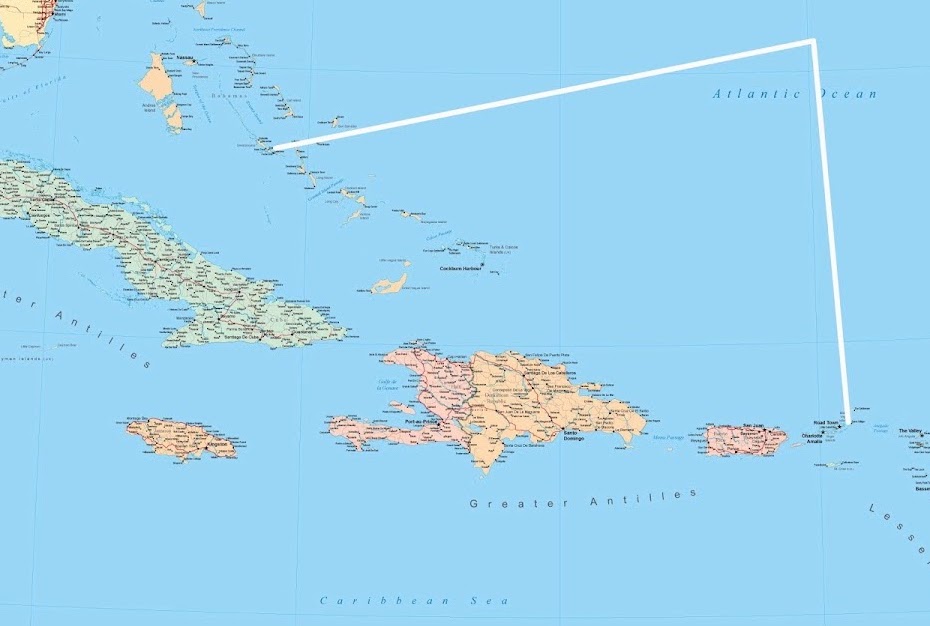
Thorny Path to Windward
Another route is called “The Thorny Path to Windward.” This is certainly not an ideal option because, as the name indicates, it comes with many thorns as you pound directly into the wind for days on end. This route usually has boaters sail/motor to the Turks & Caicos and head from one of these islands to the Dominican Republic, often the city of Luperon, and then island hopping east.
Some of the pros with this option are less overnight passages and short day passages. If one has the luxury of time to casually island hop all the way to the leewards, this can be a good option. This route also gives a sailer an opportunity to visit more locations, especially in the Turks & Caicos and the Dominican Republic. The big negative with this route is that, once in the Dominican Republic, in order to travel east to the Caribbean, one needs to travel directly into the trade winds. We’ve read that this is a very uncomfortable experience for most people, even a sickening one. It also puts a tremendous amount of stress on the boat as its bow buries into the waves head on and slaps the boat with furor.
The Thorny Path route has been done by thousands upon thousands of boaters for years and years. Bruce VanZant even wrote a book about it called, “The Gentleman’s Guide to Passages South, The Thorness Path to Windward.” From everything Kory and I have read, it’s just not possible to avoid all the thorns with this route. In fact, we’ve read comments from other cruisers who have tried to follow the guidelines for “The Thornless path,” and they still said, “Never again,” “Worst day-sails I’ve ever been on,” “It was brutal,” “It took us three months just to get from the Bahamas to St. Maarten. “We took a beating,” “We were more seasick than we had ever been,” and the like.

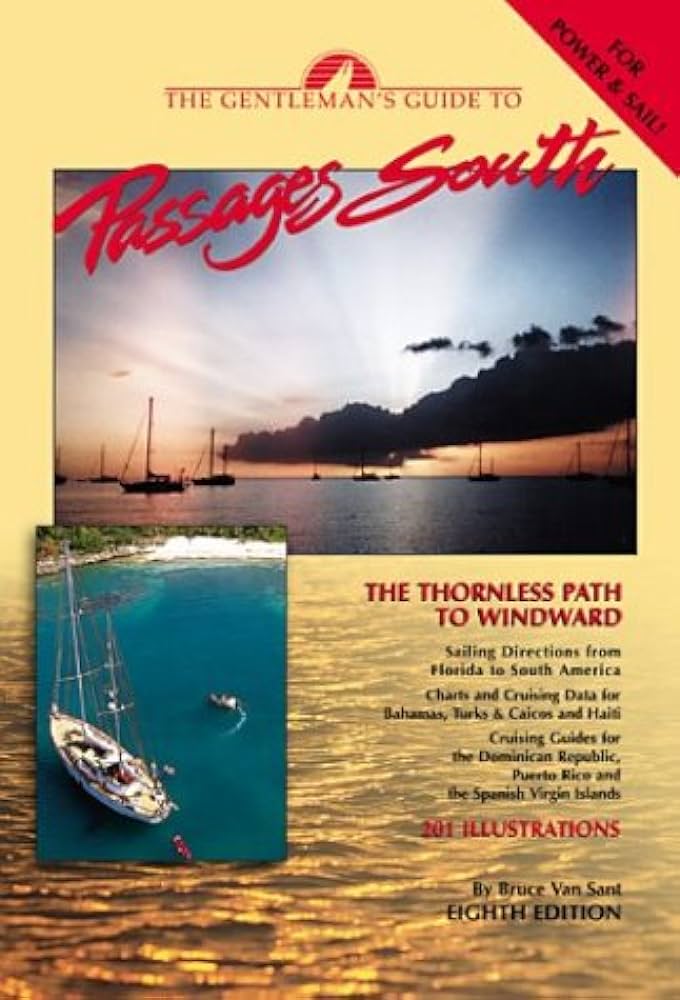
The other major disadvantage of following the traditional Thorny Path is that one can really only travel about 4-5 hours in the morning. This is due to the fact that the trade winds and subsequent waves really pick up late morning and throughout the rest of the day. It’s just not the safest. securest, or most comfortable route to take. Also, it can take a really long time simply to get from the Dominican Republic to Puerto Rico. One could be stuck for weeks or months waiting for good weather windows to head east/southeast. And going through the Mona Passage from the Dominican Republic to Puerto Rico can be tumultuous with its strong currents and high winds. Many things about this option turned us away. If we want to see the Dominican Republic, we can visit it on the way back to The States when the trade winds will be behind us (far safer and far more comfortable).



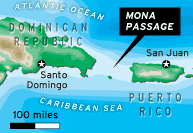
Modified Version of the Thorny Path
The third option, and the one we chose, is a modified version of the Thorny Path in which we will sail directly to Puerto Rico from George Town, Exumas, in The Bahamas. This route will have us go east/southeast along the eastern edge of the Turks & Caicos, with an option of stopping at any number of islands if anything happened to us or our boat, or if we just needed to catch up on some sleep for a while. We have chosen to go non-stop to Puerto Rico, but it’s definitely reassuring to have the option of tucking into an anchorage in the Turks & Caicos if needed.
Another advantage of this modified version of the Thorny Path is that it is only a 4 day passage rather than a 7-9 day passage on the I-65. This also allow us to bypass the Dominican Republic where we would make the slowest progress hugging the coast of the DR. We’ve heard that it can take weeks or months from The Dominican Republic to make it east through the trade winds.
Now, the main reason we chose, at this time, to do a modified version of the Thorny Path and go directly to Puerto Rico from George Town, Exumas, is because the right weather/wind opportunity came about for us to do this. A cold front was going to be passing the day of our departure, and this low pressure system would cause the winds to vere to the southwest for the first day of our passage (the most uncomfortable), and then clock to the north and northeast for the rest of our tip. This would push us from behind to Puerto Rico. This was an ideal time to sail south since we would mostly have fair winds and following seas.
We had been told by others who have done this route before us, and by Chris Parker, our weather guru, that it is very rare to be able to sail downwind to Puerto Rico. These favorable conditions helped us make our final decision on which route we would take. Because we wanted to take advantage of this rare opportunity, we chose to do this modified version of the Thorny Path and go direct from The Exumas to Puerto Rico.
This modified Thorny Path would allow us to sail on a beam reach through the trade winds going into Puerto Rico, rather than pounding straight into the waves produced by the trade winds going west. This would be so much more comfortable and safe. It was a “no brainer” for us on this occasion. And, as stated before, we wouldn’t necessarily miss The Turks & Caicos or the Dominican Republic all together because we could always visit these places on our way back to the United States when the trade winds will be behind us, pushing us along, and not beating into us.
So, that’s our plan, doing a modified version of the Thorny Path, sailing from The Exumas directly to Puerto Rico, with options to stop in the Turks & Caicos if needed. Tomorrow is the big day for our departure! We went through all of our passage checklists, secured the boat, checked engines, filled our tanks with fuel, etc. And to solidify our decision, God put two other boats in our path who are going to take the same passage/route with us, Mana Kai and Mangata. We are confident that this is the right path to take, and grateful that God answered our prayers to show us which way He would have us go. Puerto rico allá vamos! Puerto Rico here we come!
